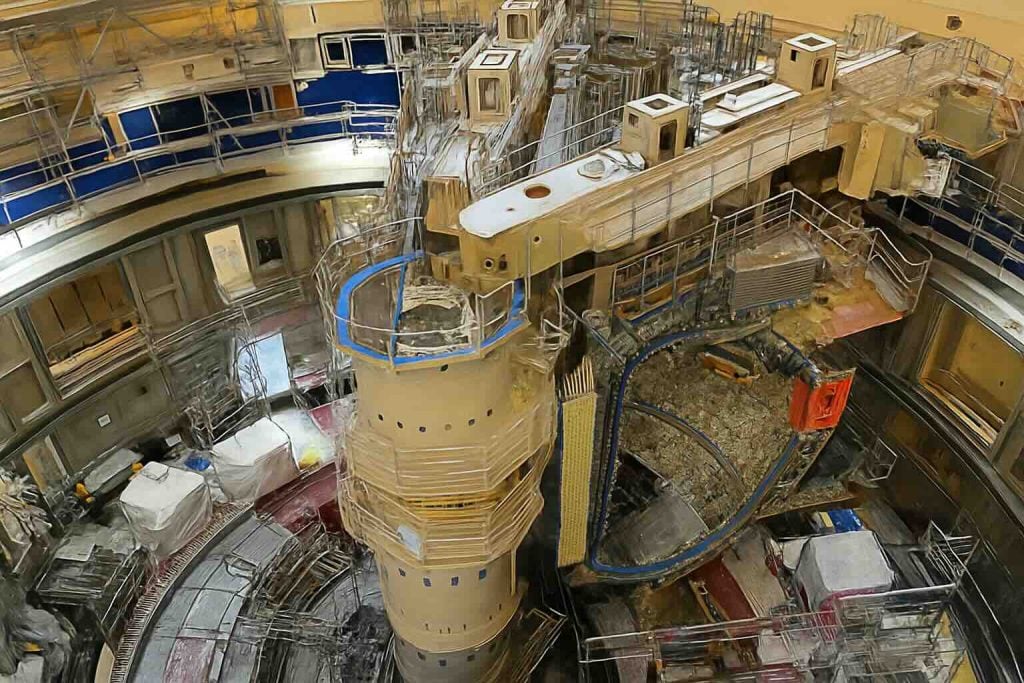The world’s most ambitious fusion energy project has reached a crucial stage as Westinghouse Electric Company steps forward to lead the assembly of the ITER reactor’s core. Situated in Cadarache, southern France, this monumental international collaboration aims to recreate the energy process that powers the sun — nuclear fusion — with the ultimate goal of producing limitless, carbon-free power for future generations.
Westinghouse leads final assembly of ITER’s tokamak core
In August 2025, the ITER project entered one of its most complex engineering phases: the final assembly of its tokamak core. Westinghouse, a pioneering force in the nuclear energy sector, secured a €168 million contract to direct this stage of construction. The task involves the precise alignment and welding of nine enormous steel sectors that will form the reactor’s vacuum vessel — the chamber where the fusion reaction occurs.
This doughnut-shaped vacuum vessel is the very heart of the tokamak, designed to confine plasma heated to temperatures exceeding 150 million degrees Celsius — several times hotter than the center of the sun. Each of the nine sectors, weighing around 400 tons, must be fitted and welded with millimeter precision to create an airtight, perfectly symmetrical structure capable of withstanding extreme magnetic and thermal stresses.
Westinghouse brings extensive technical experience to this stage. The company, working as part of the AMW consortium alongside Italian firms Ansaldo Nucleare and Walter Tosto, has spent over a decade contributing to ITER’s development. Together, they have already fabricated five of the nine major vessel components. As former ITER Director-General Bernard Bigot once remarked, building this system is “like assembling a three-dimensional puzzle on an industrial scale.” Every weld and alignment must meet near-perfect tolerances to ensure the plasma remains stable within one of the most demanding environments ever engineered by humans.
Global collaboration of unprecedented scale
ITER stands as a testament to what global scientific cooperation can achieve. This $25-billion project unites 35 nations — including the European Union, the United States, China, Russia, Japan, India, and South Korea — representing more than half of the world’s population and roughly 85% of its economic output. Each member contributes specialized components, technologies, and funding to the effort.
Unlike most large-scale energy projects, ITER’s construction depends on an intricate international supply chain. Components are designed and built to exacting specifications in laboratories and factories across four continents before being shipped to France for assembly. This coordination reflects not only technological innovation but also diplomacy at its finest — nations that are often competitors cooperating on a shared scientific goal: unlocking fusion energy for all humanity.
Key contributions include:
- Europe: Construction of the site and 45.6% of total components
- United States: Central solenoid magnet and cooling systems
- China: Correction coils and major power supply units
- Japan: Toroidal field coils and solenoid conductor systems
- Russia: Poloidal field coils and advanced diagnostic tools
Assembling these contributions into a coherent, functioning system makes ITER not only an engineering marvel but also a model for how nations might collaborate to tackle global challenges such as energy security and climate change.
Technical ambitions and timeline challenges
The scientific ambition behind ITER is straightforward but staggering: to prove that fusion power can work on a commercial scale. Once complete, the reactor is expected to produce 500 megawatts of power from just 50 megawatts of input — a tenfold energy gain. This breakthrough would demonstrate the viability of fusion as a practical, sustainable energy source capable of replacing fossil fuels in the long term.
However, achieving that goal has proven anything but simple. Since construction began in 2010, ITER has undergone several timeline revisions, largely due to engineering challenges, intricate safety requirements, and coordination across dozens of international partners. Initially, scientists hoped for the first plasma by 2018. That date has since been postponed, with current projections targeting the first deuterium-tritium fusion experiments around 2035.
These delays reflect the immense technical and logistical hurdles inherent in creating and controlling a miniature star on Earth. The challenge of maintaining plasma stability at extreme temperatures, while keeping the surrounding materials intact, continues to test the limits of modern engineering and materials science.
| ITER Component | Technical Challenge | Current Status |
|---|---|---|
| Vacuum Vessel | Precision welding of a 5,000-ton stainless-steel structure | Assembly underway under Westinghouse leadership |
| Superconducting Magnets | World’s largest magnetic confinement system | Manufacturing complete; installation to begin |
| Cryogenic System | Maintaining -269°C near 150 million°C plasma | Major components delivered; integration in progress |
The saying that fusion is “always 30 years away” persists for good reason — but ITER is closing that gap faster than any previous effort. Every step forward in its assembly brings scientists closer to proving that fusion can become a practical, near-limitless source of clean energy.
Beyond ITER : The roadmap to fusion power
ITER is not designed to power homes directly but to serve as the essential bridge to future commercial reactors. The knowledge gained from this project will shape the next phase of fusion development, including the proposed DEMO reactors — experimental plants that aim to generate electricity for the grid.
Fusion energy offers profound advantages. Unlike nuclear fission, it produces no long-lived radioactive waste and carries no risk of catastrophic meltdown. Its primary fuel — isotopes of hydrogen such as deuterium and tritium — is abundant, with deuterium available in seawater and tritium producible from lithium. This means fusion could one day provide energy security for millennia without harming the planet.
Though ITER’s completion and testing will span decades, the effort represents one of humanity’s boldest investments in the future. Beyond its technical goals, ITER is a symbol of global unity — a demonstration that nations can pool resources and expertise
